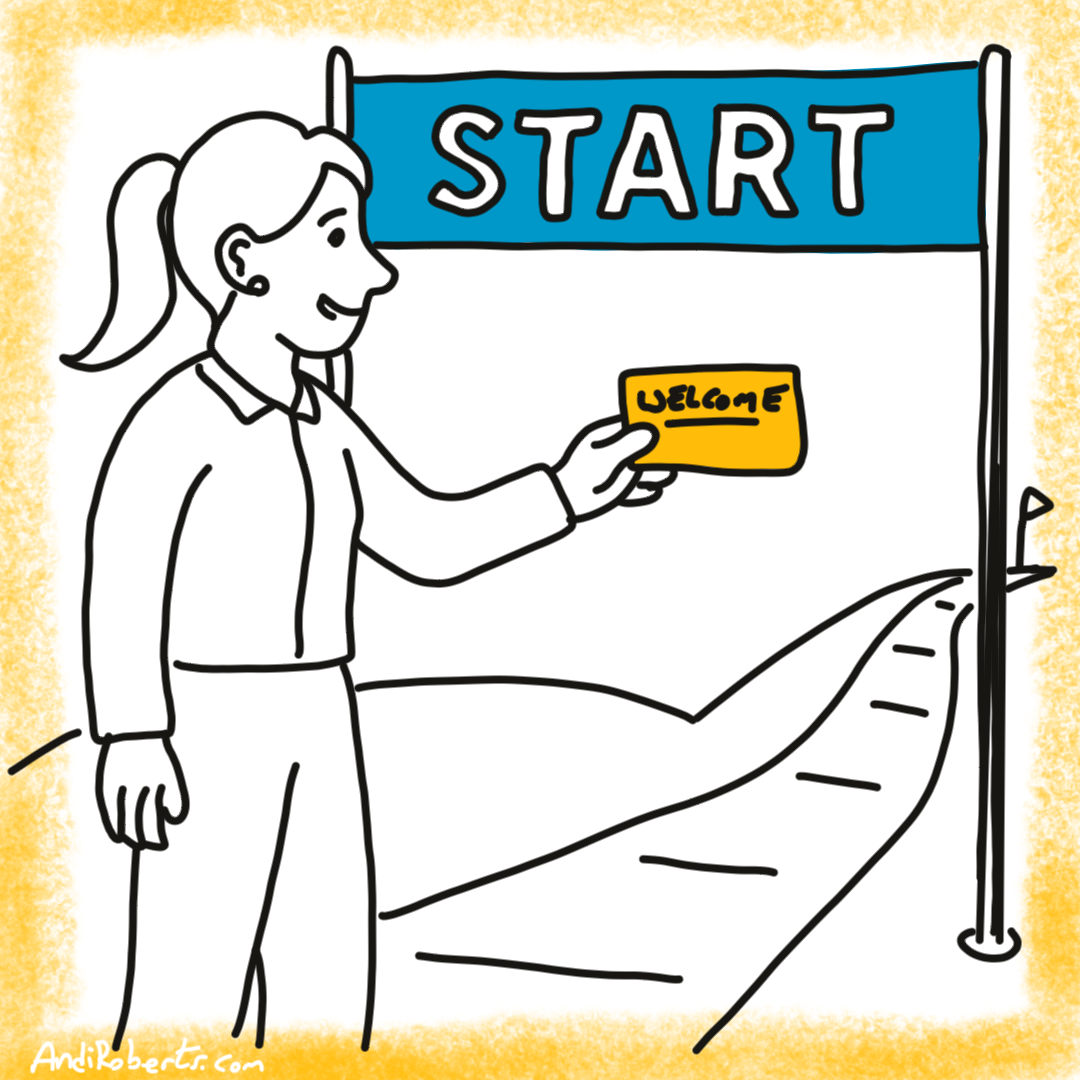In most workplaces, disappointment rarely comes from laziness or lack of talent. It comes from a quiet confusion about what is expected. A leader says, “Do this quickly.” One person believes that means “by the end of the day.” Another believes it means “before the week is out.” Both act in good faith. Both feel the other has failed.
Psychologists call this the false consensus effect (Ross, Greene and House, 1977). We assume that others interpret words, values and standards as we do. It is a small illusion with large consequences. When people speak of being “professional” or “collaborative” or “innovative”, each may mean something slightly different.
Left unspoken, these assumptions turn to frustration. We begin to question each other’s competence or character when what is missing is simply clarity. The result is a culture of doubt. People start to protect themselves rather than take risks. Clarity shifts accountability from something imposed to something chosen. Without it, accountability feels like inspection. With it, it becomes an act of mutual commitment.
The Clarity Canvas was created for this purpose: a simple frame that brings together two dimensions of work, the what and the how. It asks us to name not only the activities we do but the behaviours that give those activities their character. It invites a shared understanding of what sits beyond expectations, meets expectations, and falls below.
At its best, the Canvas is not a form. It is a conversation. It transforms the vague hope of “alignment” into the lived experience of partnership.
Why Clarity Matters
Clarity is not a managerial nicety. It is the foundation of trust. It is also one of the strongest predictors of motivation and performance. Research on Goal-Setting Theory (Locke and Latham, 1990) shows that people perform better when their goals are specific and challenging. Vague encouragement such as “do your best” consistently leads to weaker outcomes than precise standards such as “respond to customers within twenty-four hours”.
Yet in practice, many teams still operate in the fog of general intention. They use words like “quality”, “ownership”, or “collaboration” without ever describing what these look like when present—or when missing. This matters because of Expectancy Theory (Vroom, 1964). People give effort when they believe it will lead to results that will be recognised. If meeting expectations is undefined, effort feels pointless.
There is also a social dimension. Amy Edmondson’s work on psychological safety (1999) shows that people are most willing to take risks when the boundaries of behaviour are clear. Without them, individuals hesitate. They do not know whether speaking up will be seen as courage or defiance.
Clarity does not restrict freedom. It gives it form. When the rules of the game are visible, people can play with imagination. They can stretch, experiment and take ownership because they know where the edges are.
The Clarity Canvas offers a language for this. It is not a system of measurement but a map of understanding. It allows us to replace unspoken judgement with shared definition.
Examples: Individual and team
The Clarity Canvas can be used by an individual to take ownership of their contribution and by a team to describe how they wish to work together. Both levels matter. The individual canvas builds personal accountability. The team canvas builds shared stewardship.
The individual software engineer
The first example is personal. A software engineer uses the Clarity Canvas to describe both their technical responsibilities and the way they wish to participate in the life of the team.
What I Do – Tasks and Outputs
Beyond expectations
-
Deliver high-quality code ahead of sprint commitments.
-
Anticipate downstream issues and resolve them early.
-
Improve shared libraries, pipelines or documentation.
-
Mentor others through pairing and technical reviews.
-
Suggest innovations that simplify or strengthen the product.
Meets expectations
-
Complete agreed user stories within the sprint with all tests passing.
-
Participate actively in code reviews and act on feedback.
-
Follow team standards for testing, documentation and deployment.
-
Raise blockers promptly and help remove them.
-
Write code that is maintainable, reliable and easy to read.
Below expectations
-
Miss sprint goals or hand off incomplete work.
-
Submit untested or undocumented code.
-
Ignore feedback or resist changes requested in review.
-
Communicate blockers too late.
-
Require others to fix repeated or avoidable issues.
How I Work – Behaviours and Attitudes
Beyond expectations
-
Bring optimism and calm energy to team life.
-
Offer help before being asked and celebrate others’ success.
-
Share knowledge freely to strengthen the group.
-
Challenge ideas respectfully, focusing on learning rather than ego.
-
Take responsibility for the product as a whole, not only for assigned tasks.
Meets expectations
-
Communicate clearly and respectfully in stand-ups and reviews.
-
Contribute to retrospectives and planning sessions.
-
Give and receive feedback with openness.
-
Follow agreed norms for testing, pairing and review.
-
Keep commitments and deadlines.
Below expectations
-
Withdraw from collaboration or avoid conversations.
-
Blame others or deflect feedback.
-
Focus narrowly on personal tasks without seeing the wider goal.
-
Spread negativity or create friction through tone.
-
Resist adapting to agreed processes.
The individual canvas makes excellence visible. It shows that technical ability alone is not the measure of contribution. How we relate, teach, listen and support others defines as much of our value as the code we write.
The software engineering team
The second example moves from person to group. A team canvas clarifies how the collective will work and what success means for everyone together.
What We Do – Tasks and Outputs
Beyond expectations
-
Deliver features ahead of sprint goals with full testing and documentation.
-
Anticipate dependencies across teams and manage them early.
-
Contribute to shared tools and design systems for long-term benefit.
-
Share learning through pairing, demos and internal talks.
-
Fix issues beyond immediate responsibility to improve stability.
Meets expectations
-
Deliver agreed features within the sprint and meet acceptance criteria.
-
Participate in reviews and respond constructively.
-
Follow processes for testing, documentation and release.
-
Raise blockers quickly and solve them together.
-
Produce maintainable and readable code.
Below expectations
-
Miss sprint goals or release incomplete work.
-
Neglect testing or documentation.
-
Ignore review feedback.
-
Hide blockers until too late.
-
Require other teams to repair recurring problems.
How We Work – Behaviours and Attitudes
Beyond expectations
-
Ensure every voice is heard in discussions.
-
Offer help freely and celebrate group success.
-
Debate ideas with respect and curiosity.
-
Take joint ownership for the reliability of the system.
-
Continually improve practices to make collaboration smoother.
Meets expectations
-
Communicate clearly in daily stand-ups and planning.
-
Participate in retrospectives with honesty.
-
Offer and receive feedback as part of daily work.
-
Honour team agreements on pairing, testing and reviews.
-
Deliver reliably on commitments.
Below expectations
-
Withdraw from team collaboration or meetings.
-
Blame others when things fail.
-
Work in isolation without coordination.
-
Create unnecessary tension or sarcasm in communication.
-
Disregard team processes, forcing others to compensate.
When a team builds this canvas together, they move from unspoken hope to explicit commitment. They no longer rely on memory or interpretation. They have written down what it means to work well.
How to build the clarity canvas
Seeing a canvas is the easy part. Creating one is the work. The act of writing the words, questioning the meanings and negotiating differences is what produces clarity. The process is as valuable as the result. There are four ways to build it, each suited to a different context.
The leader-defined canvas
There are moments when a team needs direction immediately. The project is under pressure or the team is forming for the first time. In those moments, a leader drafts the first version. The risk is that it can feel like command. The opportunity is to present it as a starting point. The leader might say: “Here is my first attempt at defining what great work looks like for us. I expect you to edit it with me.” This keeps authority without closing the door on collaboration.
Studies of procedural justice (Thibaut and Walker, 1975) show that people care deeply about having a voice. Even when they do not win every argument, being heard changes the emotional contract. Leader-defined canvases create speed. They give a foundation for later discussion. The leader’s responsibility is to return to it soon and reopen the conversation.
The leader-facilitated canvas
When time allows, facilitation creates deeper ownership. The leader acts less as author and more as convener. They ask the group:
-
What are the essential tasks that define our value?
-
How do we want to behave while we do them?
-
What does “beyond expectations” look like for us?
Each question transforms an assumption into an agreement. The language of “we” replaces the language of “they”. The process can feel awkward at first. People are used to being told what excellence is, not asked to define it. Yet through the dialogue, they discover what truly matters. This approach builds what psychologists call a shared mental model (Mathieu et al., 2000). Teams with this shared understanding perform more effectively under pressure because everyone knows the same playbook.
The leader must insist on filling all three columns: beyond, meets and below. Many groups avoid the last one because it feels critical. But the courage to name what below expectations looks like is what gives the others meaning. Facilitation requires patience. The gain is trust that lasts.
The team-created canvas
In mature teams, every member drafts their own version before the group meets. They then compare, discuss and integrate them into a single shared canvas. This approach relies on Self-Determination Theory (Deci and Ryan, 1985), which links motivation to autonomy, competence and relatedness. When people shape their own standards, they own them.
The facilitator’s task is to draw the threads together. Similarities are affirmed, differences explored. The aim is not perfect alignment but thoughtful coherence. The result is a document where everyone sees their fingerprints. This version takes time. It asks people to slow down and think. But what emerges is not compliance; it is genuine commitment.
The one-to-one canvas
Sometimes clarity must be personal. A one-to-one canvas turns the performance conversation into joint design rather than evaluation.
The manager and colleague sit together and ask:
-
What outcomes matter most in this role right now?
-
What does “beyond expectations” look like in these areas?
-
What support or partnership would make that possible?
They then capture both task and behaviour.
This approach draws on coaching psychology. Grant (2012) found that co-authored goals create higher engagement and follow-through. The conversation becomes about stewardship of growth rather than control of output. A one-to-one canvas can be revisited quarterly. The “beyond” column evolves as the person grows. The “below” column becomes an early signal for support, not reprimand. Over time, these personal canvases feed back into the team’s shared one, connecting individual purpose to collective performance.
The principles that hold it all together
Across all methods, three principles sustain the work.
-
Transparency before perfection. A rough draft shared is better than a polished assumption kept private.
-
Conversation before measurement. The canvas is a medium for dialogue, not a grading tool.
-
Iteration before permanence. Clarity is never finished. Each project, each new hire, each learning moment will ask for revision.
The purpose of the Clarity Canvas is not to make things tidy. It is to make things speakable. Once spoken, the group can choose together how they wish to live and work.
Practice in daily life
For the Canvas to remain alive, it must be revisited. The following practices help keep it real.
-
Open every review with it. Ask, “Are these still the right expectations?” not “Have you met them?”
-
Use it in retrospectives. Notice where the team lived up to “beyond” and where it slipped toward “below.”
-
Keep it visible. Post it in the workspace or digital hub so everyone can see the shared language.
-
Model it as a leader. Reference it in your own behaviour first. Stewardship begins with example.
When handled with care, the Canvas becomes part of the team’s rhythm. It ceases to be a form and becomes a habit of conversation.
Wrapping up
The real test of the Clarity Canvas is not whether it produces neat columns but whether it produces stronger relationships and more meaningful work. Tools do not change culture. The conversations that tools provoke do. When people replace silence with dialogue, vague hopes become shared commitments. Accountability becomes an act of choice.
Clarity gives people three gifts: the confidence to know when they have done enough, the courage to admit when they have fallen short, and the freedom to stretch toward what is possible.
The Clarity Canvas is one way to create those conditions. It invites us to talk honestly about what excellence looks like, to choose our standards together, and to hold each other with respect when we fall short.
Reflective Questions
-
Where in your work are expectations assumed but never voiced?
-
What would change if you and your team wrote down what “beyond”, “meets”, and “below” truly mean?
- How might clarity free you, rather than confine you?
PDF TEMPLATE: Clarity-Canvas
You may also wish to read a post on boundary mapping that supports team clarity.
Do you have any tips or advice on creating clarity and ownership for your team or team members?
What has worked for you?
Do you have any recommended resources to explore?
Thanks for reading!
References
Deci, E.L. and Ryan, R.M. (1985) Intrinsic motivation and self-determination in human behavior. New York: Plenum Press.
Duhigg, C. (2012) The power of habit: Why we do what we do and how to change. London: Random House.
Edmondson, A.C. (1999) ‘Psychological safety and learning behavior in work teams’, Administrative Science Quarterly, 44(2), pp. 350–383.
Grant, A.M. (2012) ‘Making positive change: A randomized study comparing solution-focused vs. problem-focused coaching questions’, Journal of Systemic Therapies, 31(2), pp. 21–35.
Kazdin, A.E. (1973) ‘Methodological and interpretive problems of social reinforcement’, Journal of Applied Behavior Analysis, 6(3), pp. 405–422.
Locke, E.A. and Latham, G.P. (2002) ‘Building a practically useful theory of goal setting and task motivation: A 35-year odyssey’, American Psychologist, 57(9), pp. 705–717.
Mathieu, J.E., Heffner, T.S., Goodwin, G.F., Salas, E. and Cannon-Bowers, J.A. (2000) ‘The influence of shared mental models on team process and performance’, Journal of Applied Psychology, 85(2), pp. 273–283.
Parasuraman, A., Zeithaml, V.A. and Berry, L.L. (1988) ‘SERVQUAL: A multiple-item scale for measuring consumer perceptions of service quality’, Journal of Retailing, 64(1), pp. 12–40.
Ross, L., Greene, D. and House, P. (1977) ‘The “false consensus effect”: An egocentric bias in social perception and attribution processes’, Journal of Experimental Social Psychology, 13(3), pp. 279–301.
Thibaut, J. and Walker, L. (1975) Procedural justice: A psychological analysis. Hillsdale, NJ: Lawrence Erlbaum Associates.
Tversky, A. and Kahneman, D. (1981) ‘The framing of decisions and the psychology of choice’, Science, 211(4481), pp. 453–458.
Vroom, V.H. (1964) Work and motivation. New York: Wiley.






Leave A Comment